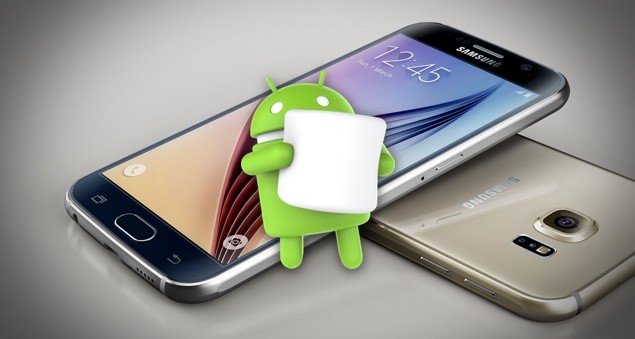Android 4.0 Ice Cream Sandwich turned into Android 4.0.1 (October 21, 2011), 4.0.2 (November 28, 2011), 4.0.3 (December 16, 2011), and 4.0.4 (March 25, 2012), which then turned into Android 4.1 Jelly Bean (July 9, 2012). Then, there was Android 4.1.1 (July 2012) and Android 4.1.2 (October 2012), followed by Android 4.2 Jelly Bean (Nov. 2012). Android 4.2 was followed by Android 4.2.1 (Nov. 2012) and 4.2.2 (February 2013), which was then succeeded by Android 4.3 Jelly Bean (July 2013).
Then, there was Android 4.3.1, which, after a big update to 4.3 was met by another big update in Android 4.4 KitKat (Oct. 2013). KitKat brought a host of incremental updates: 4.4.1 (December 2013), 4.4.2 (December 2013), 4.4.3 (June 2014), and 4.4.4 (June 2014). Then came Android 5.0 Lollipop (November 2014), 5.0.1 (December 2014), 5.0.2, and then Android 5.1 (March 2015) and 5.1.1 (April 2015). The announcement of the Nexus 6P and Nexus 5X in September brought the release of Android 6.0 Marshmallow for Nexus devices on October 5, 2015.
Now, in just two months, Android 6.0.1 has been released and there is an Android 6.1 Marshmallow on the way, confirmed by a renown leakster in the business regarding a new HTC device codenamed “Perfume.” Yes, in just eight weeks, we’ve gone from the Android 6.0 Marshmallow confirmation to Android 6.0.1, which brings over 200 new emoji, fonts, and a new Google keyboard, and Android 6.1 will be an even bigger update than 6.0.1. Android 6.1 will bring not only security updates but also improvements to Google’s own AMOLED display colors, with some Nexus 5, 6, 6P, 5X, and Player users noting that their devices are now displaying washed-out colors on certain occasions. Google has said that it’s solved the problem internally, but will need a new update past 6.0.1 (hence Android 6.1) to deliver a fix.
Yes, there are some updates worth having, and Google aims to bring the best Android experience to its Nexus customers as well as OEM customers. However, why is it that we need to have Android 6.0.1 at all? Why not have saved all the new emoji for Android 6.1 and provided two updates to Marshmallow instead of what will eventually become 3 updates (6.0, 6.0.1, 6.1, and beyond)? These Android updates are starting to become what I call “update spam,” updates for the sake of updating. In addition, many of the Nexus updates contain new bugs that the new updates create while fixing old ones at the same time. Perhaps taking time to iron the bugs out of new updates before their releases would help OEMs catch their breath some before clawing through a second successive update.
Google, do you not realize that you must take your OEMs into consideration? After all, the success of Android has been on the shoulders of OEMs who should be considered when these updates are released. Not only do OEMs have to push the updates from Google, but they also have to provide their own tweaks and changes to their UI overlays or add additional features for their users within these updates.
Why make the work harder for them and, in turn, frustrate customers who continue to grow upset with Samsung (for example) because it takes 4 months to update from 5.1.1 Lollipop to Android 6.0 Marshmallow, for example? And now that Android 6.0.1 is announced, what will Samsung customers say? “Samsung, Nexus devices are on 6.0.1, and I’m still on 5.1.1; I’m two updates behind!” Then, Samsung customers complain about Samsung when it’s not Samsung’s fault that the company has to add additional bug fixes and enhancements for 6.0 and send it out as Android 6.1 Marshmallow.
This is not to say that updates are bad; they’re not. However, it appears as though Google is creating fragmentation through updates. Since Google owns Android, and can pass the updates along as it pleases (which, of course, comes after updating its own Nexus devices), how can other OEMs be blamed if Google passes along one update like Android 4.4 KitKat while creating Android 4.4.2 KitKat in the same month, for example? Before the 4.4 update arrives, the OEMs are already two updates behind.
Let me paint a picture of what OEMs must endure when updating devices. First, they start with a ROM, say Android 5.0, but then, while updating devices, Google releases Android 5.0.1 and 5.0.2. At this point, OEMs are forced to start over with the current ROM if they want to provide the latest (which would be 5.0.2). Instead of starting over again and again, OEMs choose to continue with the ROM they have. The only problem is that, now that Android 5.0.1 and 5.0.2 are out, customers won't be so happy with 5.0. If Google released Android 5.0 and saved the incrementals for Android 5.1 while waiting for a few months, perhaps Android OEMs could all update to Android 5.1 Lollipop at the same time. The same goes for Android 6.0, 6.0.1, and 6.1.
Some have blamed Android OEMs for the fragmentation (with their UI overlays and additional software, such as Samsung’s TouchWiz), and others have said that Google needs to force OEMs to stop adding their own “flair” to Android, but perhaps another solution to all this would be for Google to stop sending so many incremental updates in-between major ones. For example, Android 5.0 and Android 5.1 Lollipop were enough for Android Lollipop; there was no need of a 5.0.1, 5.0.2, and 5.1.1. In the same vein, Android 6.0 and Android 6.1 are enough; there’s no need for an Android 6.0.1 that brings a new Google keyboard, fonts, and emoji. I’m sure that no one’s dying to use that “Taco” or “Unicorn” emoji so badly that they’ll just have a heart attack if they have to wait until Android 6.1 to experience it.
What Android OEMs bring to the table is a good thing, and Android’s freedom of choice is what makes it the world’s most popular platform. If the benefits of fragmentation are going to be seen for what they are (“benefits” and not “handicaps”), then Google has got to step up, be the “Parent” of Android (not compete as one of the “children”), and stop with these incremental updates that deliberately place Samsung and other OEMs behind its own Nexus devices as though Google’s Nexus devices are part of the OEM competition. If Android 6.1 is on the way and will provide all of 6.0.1 and then some, why do we even need Android 6.0.1 in the first place?
Updates should be like sweets, sent sparingly.







